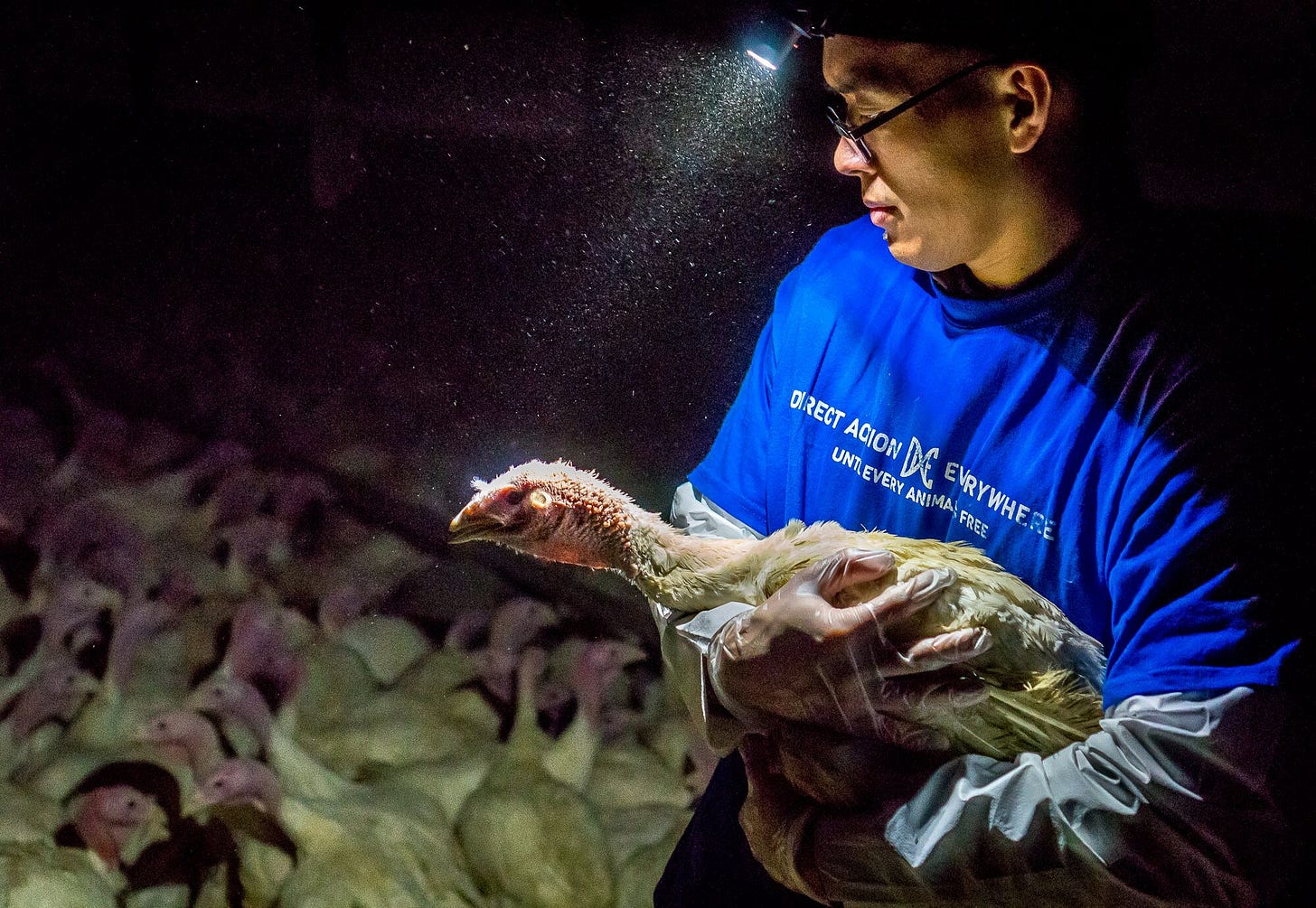The Languages I Learned From a Slaughterhouse
Look closely, and you will see two ancient languages on the kill floor: the language of fear, and the language of care.
In 1989, I returned to my ancestral homeland — 40 years after my family fled across the Taiwan Strait — and learned a new language. But the language was not Chinese. It was the language of fear.
We arrived at a restaurant that promised all the flora and fauna of the Earth. There were bright melons and colorful vegetables. Strange soups and pungent smells. But what caught my eye were the cages in the back. The meat at this restaurant would be served fresh. And it included not just standard American fare — chickens, ducks, and fish — but also dogs and cats.
I was fond of seeing animals from my many trips to the Indianapolis Zoo. (“Can we go again, Dad?” I’d ask. “We’ve already been four times this month, son.”) But these animals were different. The monkeys were huddled in the backs of their cages holding each other tight. The guinea fowl were dirty and defeated and, in some cases, fallen over on their side. But it was the dogs — gentle-looking mutts with wide eyes — who taught me the language of this place.
“Why do they cry when we come close?”
“Because, son, they are afraid.”
I realized these dogs would end up on someone’s dinner plate. I burst into tears. “Dad, we have to help!”
“There’s nothing to do son. This is just what they’re taught.”
It was the first time I thought: I need to understand why we are taught what we are taught.
Fast-forward 30 years, and I am inside a place of slaughter again — the largest in the State of Utah, in fact. I am speaking to a clean-shaven man with auburn-brown hair, dressed in a polo shirt. He is a manager of some sort at this turkey plant.
I have been charged with serious crimes for taking photos inside this farm — in direct challenge to the state’s so-called “ag-gag” law — and for taking three injured birds to the vet. I’ve returned to the facility to protest. Much to my surprise, they invite me in.
“What can I do for you, sir?”
“We have a concern about animal welfare.” I explain what I saw: thousands of animals crammed into industrial sheds, with many beings trampled to death.
“We’re making changes. I appreciate the lessons you activists have taught.”
He says he wants to let the birds outside — where they will see the sun and the sky for the first time — and to end the practice of mutilating their toes.
“Will the owner agree?” I ask.
“I’m sure of it.”
“Why?”
“Because I’m Rick Pitman. I’m the owner of the farm.”
My mouth opens wide. This “manager” is one of the most prominent poultry farmers in the American West. His family’s name is in every Whole Foods.
Over the next few years, I meet with Rick on a dozen occasions. We discuss his efforts to improve animal welfare, and my efforts to create a culture of nonviolence and dialogue (even with factory farmers) in the movement for animal rights. We each receive hate from each other’s respective camps. But our relationship becomes not just a negotiation, but a friendship. Rick shares with me the economic blight of the rural community in Utah — and his family’s personal crises as well. I share with him my failures as a leader — and the devastating loss of my mom.
When I go to trial in Utah in October 2022 for exposing factory farms, Rick is no longer an adversary. He’s a witness for my defense.
“There’s a difference between stealing and giving a sick animal some help,” he testifies.
To everyone’s shock, including me, I am acquitted by a jury a few days later. I realize that a factory farmer in Utah — deep red, agricultural Utah — has taught me another language. Wherever there is suffering, there’s a yearning to help, too. It is the language of care.
As people cry and cheer all around me, the only thought on my mind is this: I must learn how to spread this language to every corner of this Earth.



Incredibly touching and moving!
I’m positive, if each of us worked for just one day at a chicken, or cow, or pig, or sheep, or turkey farm, we each would come away with horrendous stories of how the animals are abused physically and mistreated spiritually. I question myself constantly how it is possible to have hundreds of restaurants and dozens of supermarkets within five minutes of my home and all are well stocked with every seafood item or meat product one could want.
Back in the day, when folks needed to grow their own meat and vegetables, it seemed right and logical that they would produce and butcher their own animals. It even seemed responsible. With the growth of our societies and cities, we have no say it how our food is grown or raised. It is something to ponder as we swing our shopping carts toward the meat department and then hurry off to collect the kids from school.
Thank you for sharing your story. I do care!
Dear Wayne - This is so moving. You’re the force of nature that will turn the tide. Know we are with you and the world will know your name.